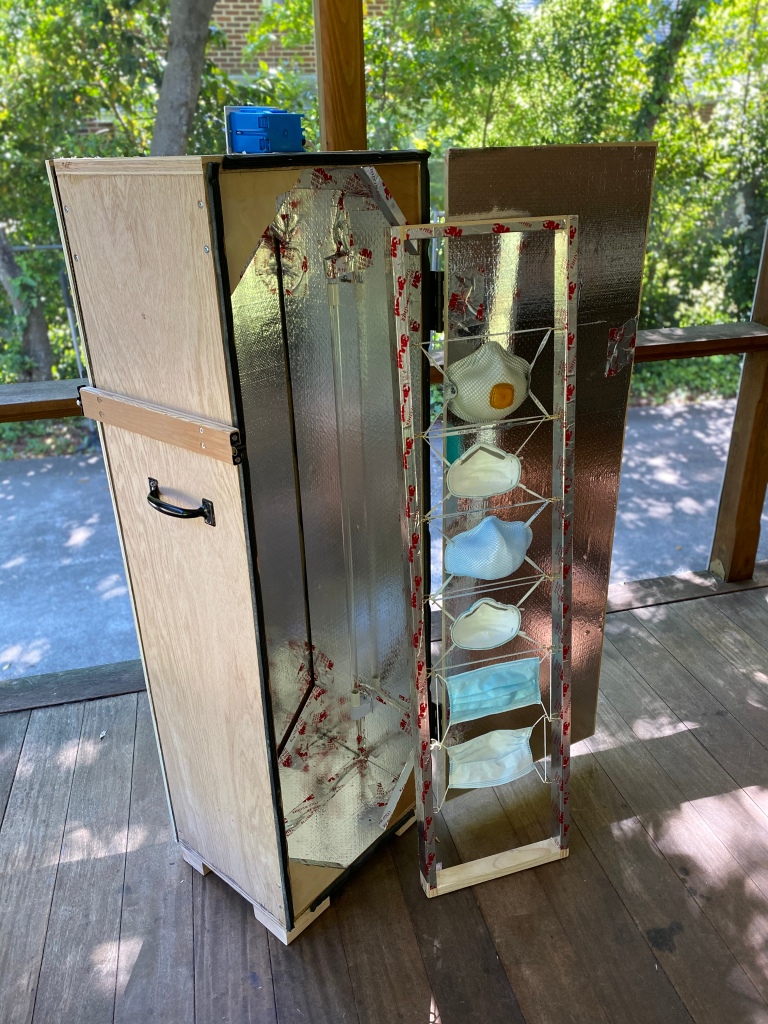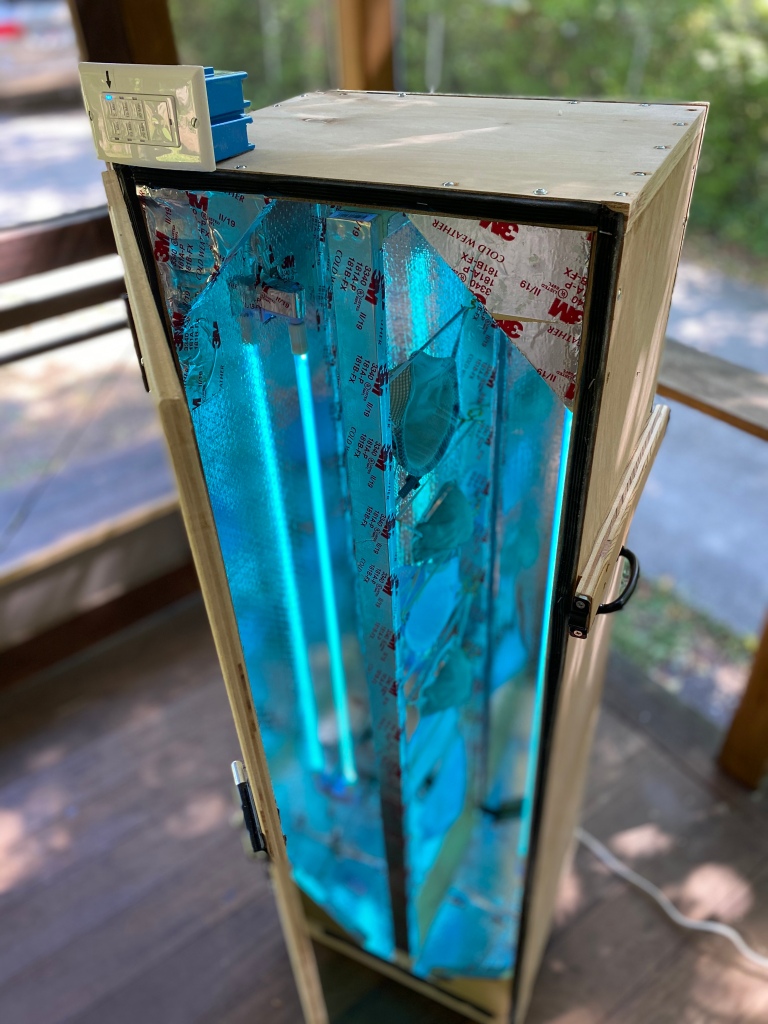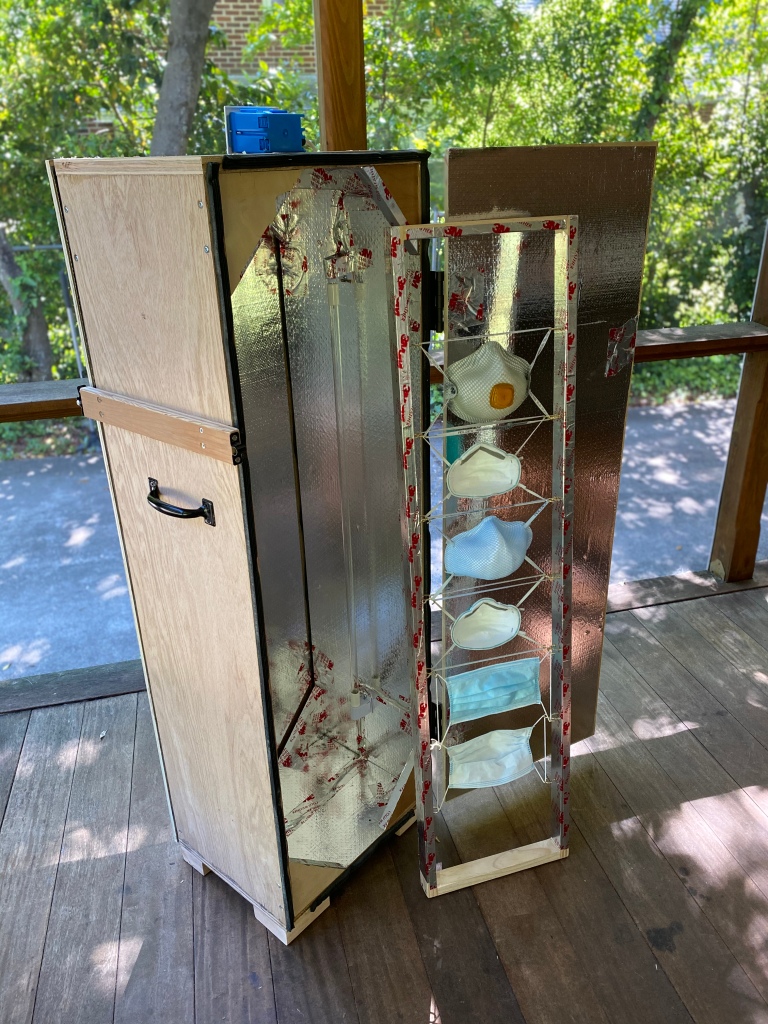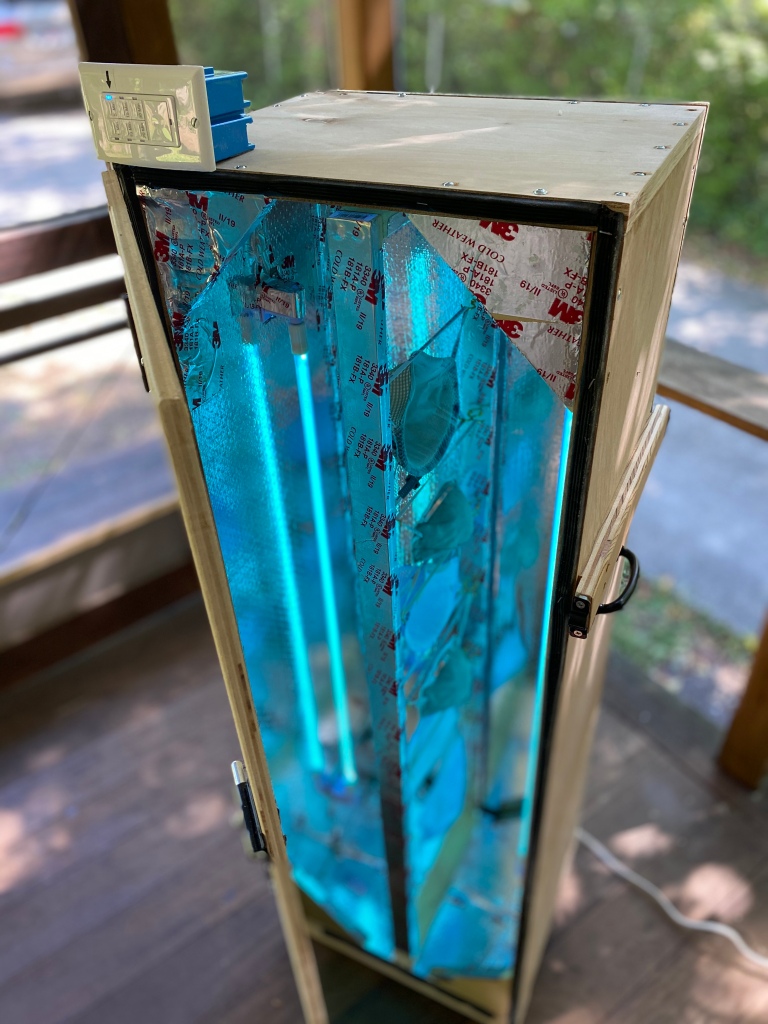This site presents a design for an inexpensive device capable of ultraviolet germicidal irradiation (UVGI) that might be a temporary help to health care providers experiencing shortages of personal protective equipment (PPE). There is extensive scientific literature on the use of UVGI to clean PPE for reuse during a pandemic without significant structural degradation of N95 masks exposed to repeated UVGI. PLEASE consult primary materials like we have posted on the “Summaries and Research” page.
This device is in use by the Columbia Richland Fire Rescue Department in Columbia, South Carolina. You can read their press release announcing use this project here. The “Process for Use” page provides their written procedures and a video walk through. They have three of these devices installed in a trailer, and using a very conservative calculation of our treatment time per batch they have the capacity to treat approximately 180 N95’s per hour. Adding more devices would increase the hourly output.
This design and the website were built by a small group of private citizens volunteering to help our local fire department deal with the projected shortage of PPE in many health care organizations in our area. We have consulted with experts in the field of UVGI, but we cannot guarantee that your use of this information will be effective. We provide information on this site only to share our experiences so others might be able to respond more quickly to their own challenges.
Our intent is for this information and design to be used by health care providers that cannot secure sufficient PPE nor afford larger scale technologies for disinfecting their PPE. Please don’t be a jerk and buy up all the UV bulbs. Please don’t be greedy by stealing our design and hoarding it. We believe in collaborating to help in times of need, and we will work to protect that effort. If your organization wants to talk directly about this approach, please send us a message through the “Contact Us” page.
Design Highlights
The device is a lightweight box equipped with two bulbs rated to emit 15W of UV-C radiation, lined with reflective material, fitted with two doors and a removable frame. Six N95 masks at a time are hung on the frame that is inserted into the center of the box from one side, treated with light, then removed from the opposite side. Users can create a physical barrier between the two sides, with a protocol to keep treated and untreated materials separate. One person per side can continuously operate the device. To meet higher demand, simply use multiple boxes next to each other.
Our device is built from materials available from most local building supply stores, but UV-C bulbs were mail ordered.
Testing
We tested the UV-C output of this design with a radiometer (expensive) and a dosimeter card (inexpensive and available by mail order), and results have been reviewed by experts from a local university and the public health department. Our device requires just under three minutes to get to the 1 joule/cm2 UV output identified in the peer-reviewed scientific literature as necessary to be effective against coronavirus. To allow for some margin of error, we plan to treat each batch of masks for five minutes. Note: using UV-C on fabric is NOT the same as using it on hard surfaces. You need greater exposure to be effective on fabric compared to hard surfaces.
Calculate the hourly volume of masks you can treat by determining the length of time required for each batch and the number of boxes you use. With three devices installed in the Columbia Richland Fire Rescue’s trailer, we expect to treat up to 180 N95’s per hour.
The videos below give overviews of the device’s functionality, the details of the design, and a demonstration of our test results using both a radiometer and a dosimeter card. Note, however, there is a lot of difference in actual UV-C output from different bulbs even though they have the same manufacturer’s ratings. In earlier tests (not shown in the videos below), we found upwards of a 30% difference in UV-C output across different brands of bulbs with the same manufacturer’s specifications. You need to test the actual output of any device you build. If you build a UVGI device that does not deliver the necessary UV-C treatment, either because you use under powered bulbs or do not use a long enough exposure time, or if the protocol you follow when using that device is flawed, you are putting health care workers in danger. The basic concepts are straight forward, but make sure you’ve covered your bases.
These videos explain our design, technical details, and demonstrate our UV-C output:




